The Marketer’s Guide to Gain Brand Mileage on Google Maps
- September 9, 2020
- Uncategorized

Are you a local business that serves customers at a physical address?
Then you must snatch the golden opportunity to grab consumer attention with the ultimate local guide, on a mobile device including the iPhone and iPad as well as all Android device products.
- ⅓ of mobile searches are based on location.
- Overall, local searches are growing 50% faster than overall mobile searches.
- As of 2013, 70% of searchers used the “click-to-call” function directly from the search engine result pages (SERPs).
- Searches including the phrase “best place to buy” with the applicable product or service keyword grew by 70% between 2015 and 2018.
- “Near me” searches also rose by 500% in recent years. These include searches like “car dealerships near me” and “wedding dresses near me.”
Google also realizes that your business is ‘special.’ And, it released an algorithmic update, in July, 2014, to favor local businesses for neighborhood-focused mobile device queries.
While there are local guide Android app platforms released, in this article, I’ll particularly focus on Google Maps marketing paying attention to the mapping app in an iPhone and iPad as well as any Android device.
Google Maps actually started as a C++ program at Where 2 Technologies. After making a series of company acquisitions, Google started its desktop web mapping service in 2005. Then. in September 2008, the Google maps mobile app was launched on Android.
The application is widely used by commuters for its features like navigation, street view, public transit information, and finding local businesses. In 2013, the app was the most used smartphone app in the world.
I’ve written about local business marketing and local SEO before. While optimizing your website for Google search results is a good start, there’s still a disparity between map and web search results. So, you might have to separately optimize your business listing in a local guide to appear higher in Google Maps results. Your site needs to link up to the mapping app via your API key.
Furthermore, you can also display your local inventory and purchase space to appear higher on the Google Maps results. Customers are also able to get real-time traffic times to reach you when you incorporate navigation app capabilities.
Let’s get started with Google Maps marketing and drive qualified local traffic to your store even with walking turn-by-turn navigation if you choose.
Ensure that your citations are accurate and optimize your business listing
The first step to making your business easier to find on Google Maps remains the same. Go to Google My Business and claim a listing for your business. This listing will appear in the search and maps results. A site responsive to a mobile device will outperform one that isn’t.
The verification process takes a few days, as Google wants to make sure you are who you say. They’ll send you a physical postcard with a PIN. When you get it, follow the link, enter the pin and get to work.
Google emphasizes that the information you provide about your business must be accurate.
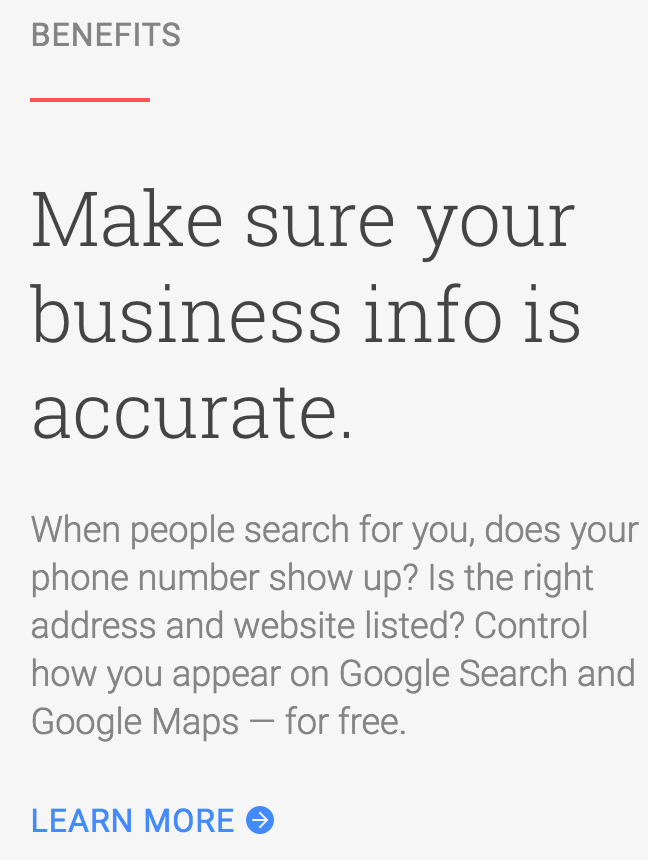
Google determines your business location and presents your listings in its results based on the presence and accuracy of NAP – Name, Address, and Phone number (with local area code). On-Page SEO is the simplest marketing ingredient that you need to take care of as a business owner.

But, guess what?
Many local businesses provide incomplete and wrong information. Sadly, they don’t even put the effort to update their local guide listings.
It’s not completely the local business owners fault, though.
You need to take extra care, while providing data about your business. Give your address, right down to your street and floor number. And, it must appear EXACTLY the same way across the internet – on your website and other local directories. Even the formatting of your address should remain the same.
Your business mentions on other listings, like Yelp, are called citations. And, citation inconsistency was found as the number 1 ranking issue for local businesses. Moreover, almost all local businesses were found to have a duplicate Google+ listing (which can lead to ranking penalties).
So, I would recommend checking the business address that you provide to the local postal service. For a more thorough analysis, I recommend reading my article on how to conduct a local SEO audit.
Let’s evaluate the business listing for a salon in California. Here is what I see in Google Maps, when I search for a salon.
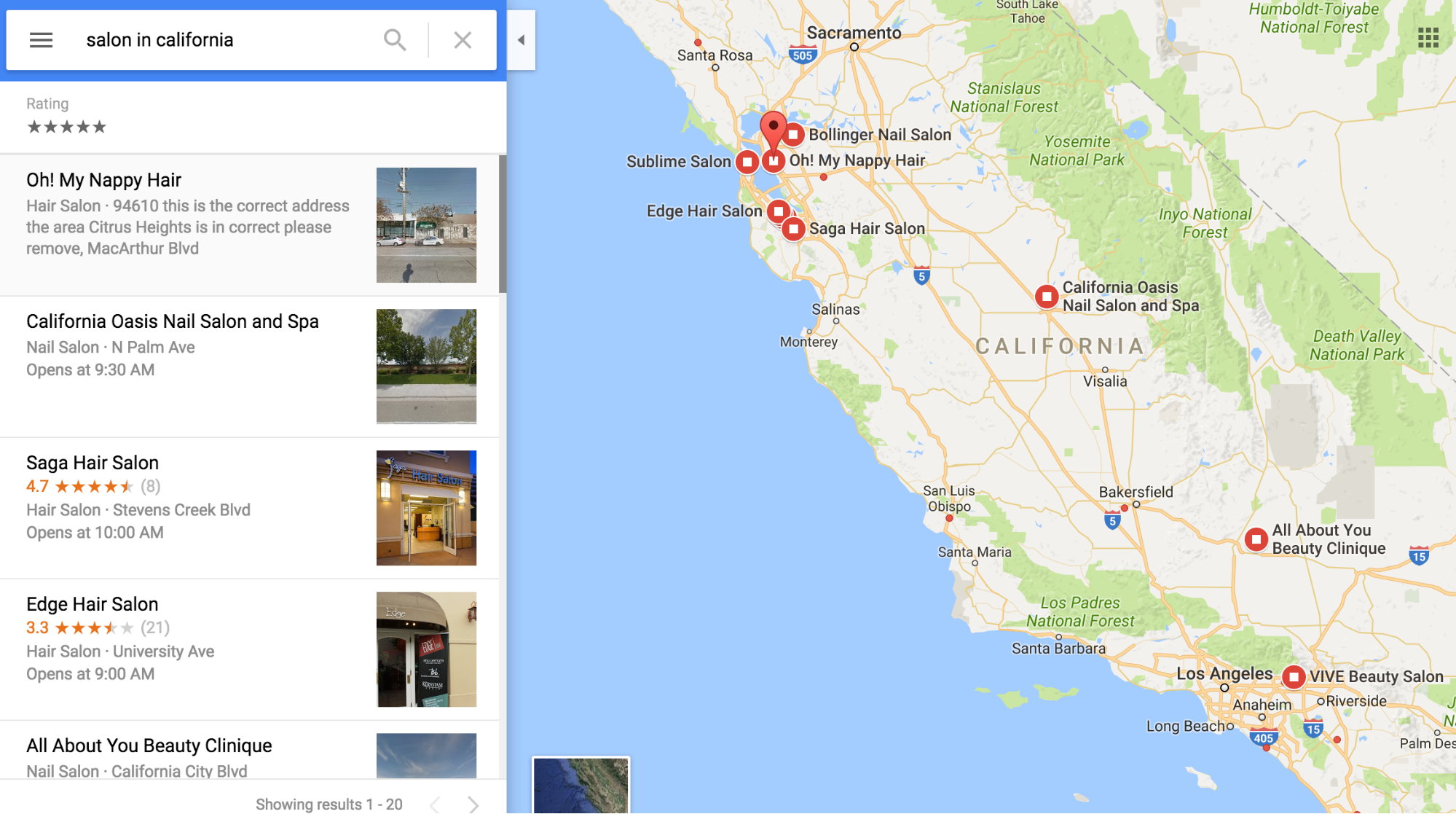
Now, let’s check the info provided by Saga Hair Salon (it’s the first listing with a public rating). The listing provides the salon’s address, operating hours, and contact number, along with their official website. If you scroll down the listing, you’ll also find a few photos that portray the salon well.
You should then add additional photos of your business featuring your interior, exterior, team members, and products. (You probably know this from your own experience searching local businesses, but a Synup study confirms – businesses with photos get 35% more clicks than those without, and they’re twice as likely to be considered reputable by users.) The idea is to help make your business appear friendly and accessible, so add photos that answer the question, “Why should I choose you?”
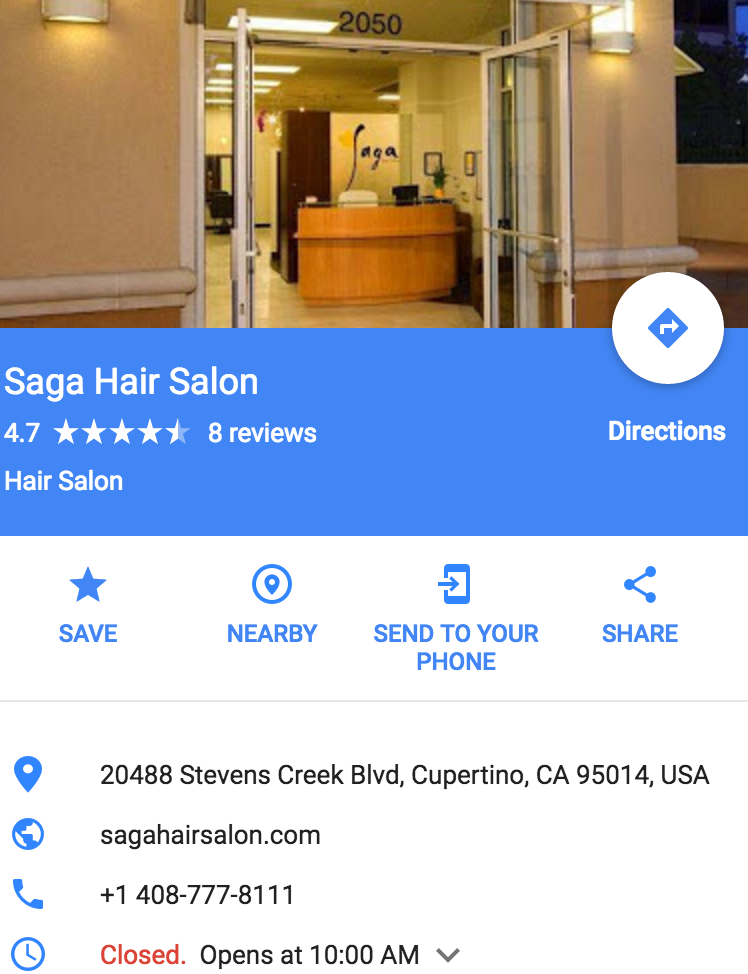
Now let’s visit their website and cross-check the info. Note that we’re not critiquing the design at this point.
When I visit their site, the same address and contact number appear near the top, in the exact same format. Plus, the information isn’t embedded inside a photo – search engine spiders can access it. So far, so good.
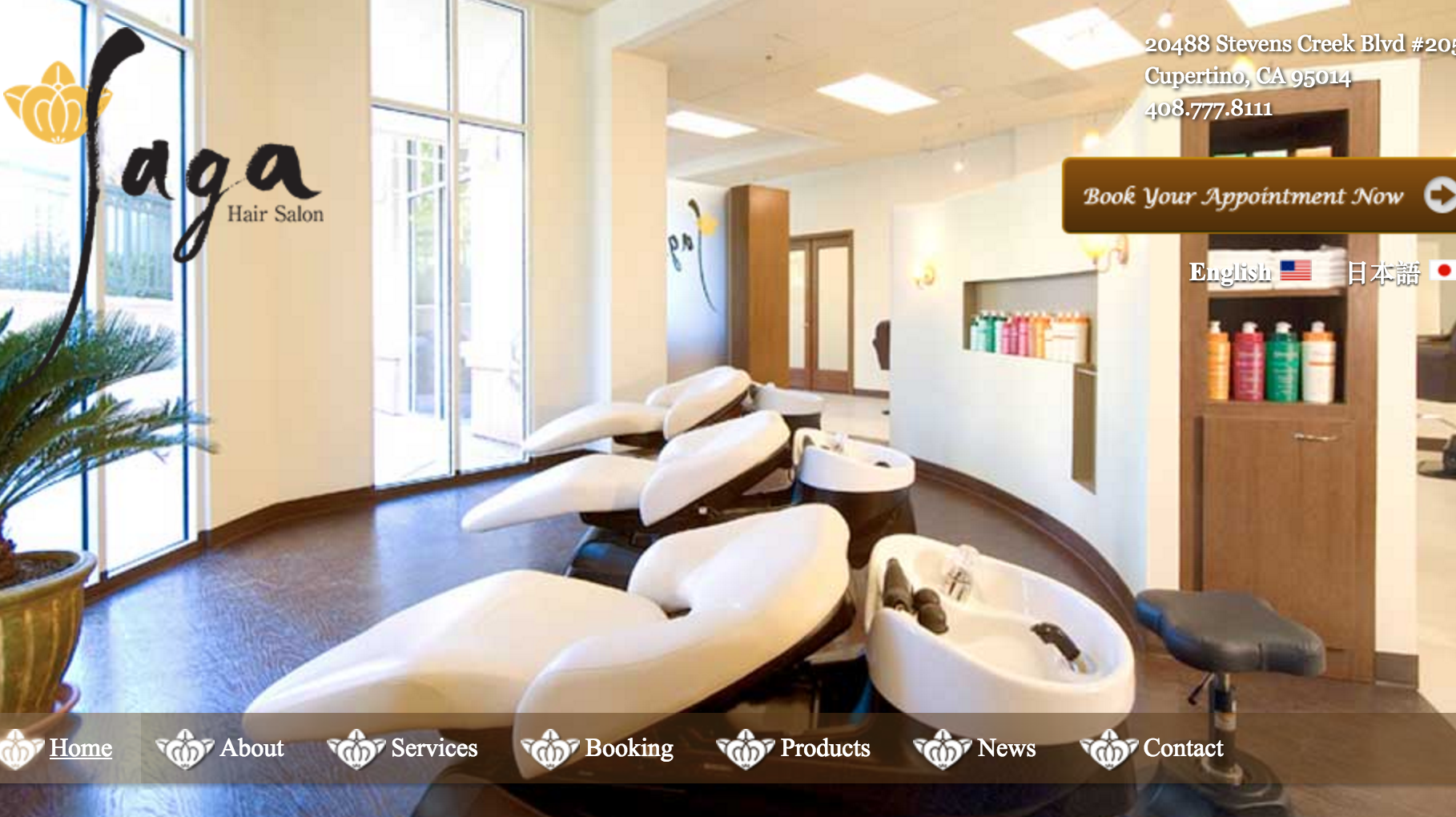
When I scroll to the bottom, I see the same address info, contact and business hours (as listed on Google Maps) as well as an option to go to map view and get directions. Again, a win!
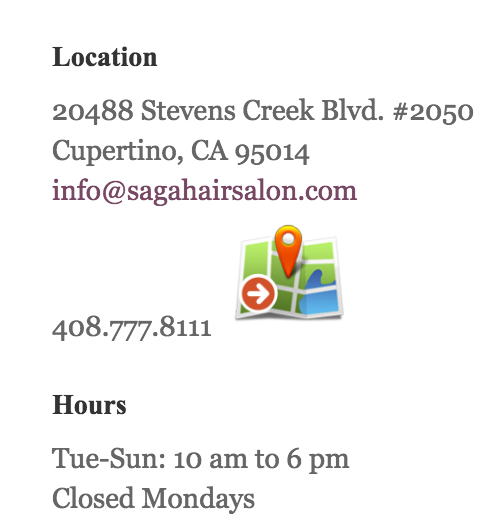
It’s on their contact page that they commit the first mistake. Their phone number is listed in a different format from the other places that we’ve reviewed. And, while the graphic illustrating their location is okay, they could have embedded their Google Maps listing instead.
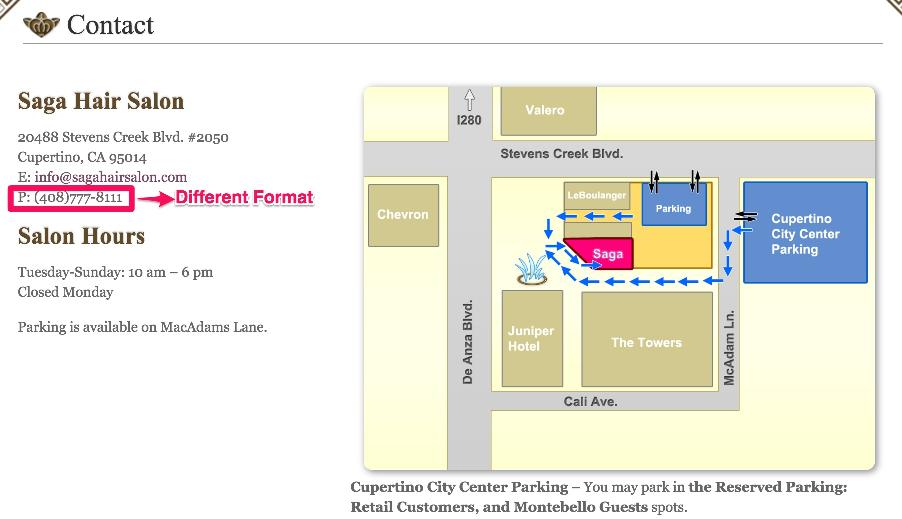
I went on to evaluate the salon’s other online citations, by searching for their business name in Google. Their Facebook page also provides NAP in a different format. And, their Yelp listing states that they are open 7 days a week (although they say that they are closed on Mondays on their website).
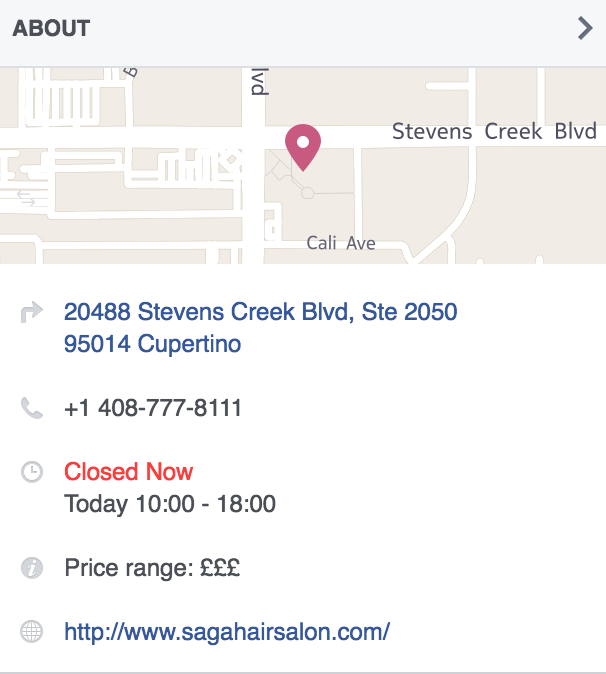
Such inconsistent info can hurt a business’ credibility. And, it can also push their listing down in Google Maps results if another optimized business gets their NAP correct across all citations.
I hope my breakdown of the Saga salon gives you perspective on how to conduct your NAP consistency check. After tweaking your listings, check your Google Maps listing once, to ensure that your address and other info is being displayed correctly, especially in a mobile device where formatting can become misaligned.
I would also recommend that you get your business verified (it takes a couple of weeks).
Finally, insert high-quality photos that portray your business in a good light. If the ambiance is important for your customers, then a good photo thumbnail can improve your CTR. And, the customers can also navigate through the additional photos you upload (by scrolling down through your listing).
For example, look at the Google Maps results, when I search for Chinese restaurants in Los Angeles. The Phoenix Inn Chinese Cuisine restaurant image immediately grabs my attention.
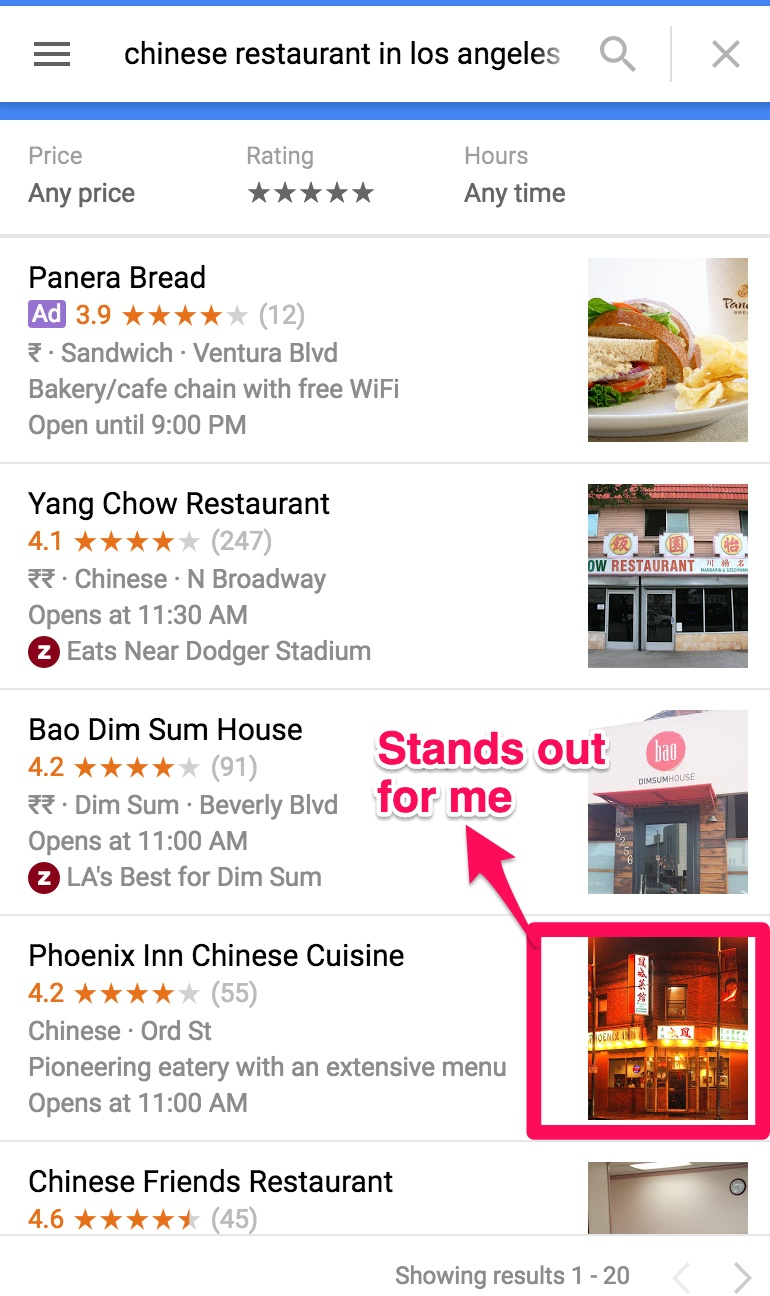
To further optimize your images, you can also add relevant local info about your business in the alt text and image metadata. There is a Google API key assigned to your business content program, sort of like its own Social Security number, letting Google know that all relevant data spiders find go to your business (and not the Chinese restaurant down the street).
Want a good example of how to complete your Google My Business listing?
Watch the Otis James’ success story below (he brings old-fashioned crafting to people).
Reach for the stars
Once you get the basics right, you should request that the customers that visit your store review you. In a Search Engine Land survey, 72% of consumers said that positive reviews made them trust a local business more.
Social proof matters.
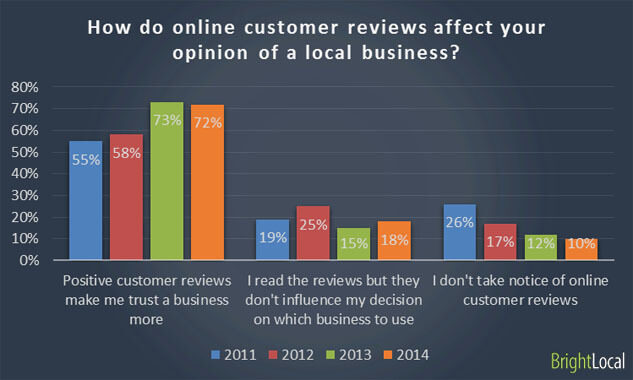
The obstacle is that customers are much more likely to post their negative experiences online, rather than positive.
So, first, you need to encourage and remind your customers how easy it is to review your business on their android device, their iPhone and iPad (for those running around town with them).
Second, you’ve got to stay on top of the reviews, with designated customer service folks in place. Understand that only 23% of customers post negative reviews out of vengeance. And, 70% of the people who complain online hope to get a reply.
The Google My Business dashboard allows you to easily see all of the new reviews and to respond to them.
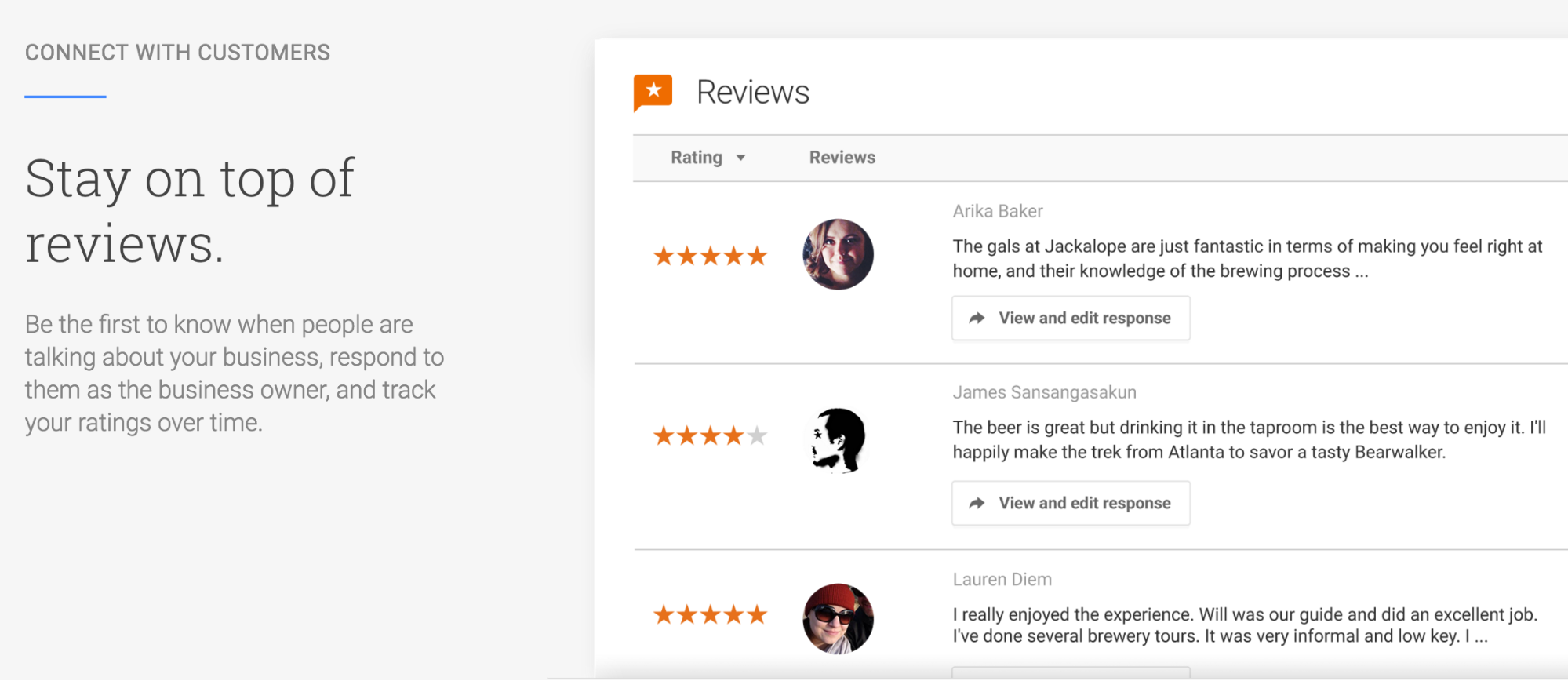
If you get a negative review, then don’t launch a personal attack. Be courteous and thank the customer for their feedback. As per Google guidelines, you can also flag a review as inappropriate, if it violates the Google guidelines. But, you can’t edit your negative reviews.
I’ve written in more detail about how to get more online reviews that you can read, here. Remember that a higher number of 5-star reviews alone doesn’t guarantee a higher placement.
The best way to get reviews, especially for salons and other service companies, is to ask for them when interacting with customers in person. Most customers are happy to oblige and consider it an extension of your relationship. Otherwise, you can ask for reviews via email with a link to your Google My Business page in your message.
You can also “automate” the request by including it in your digital receipt. Payment merchants like Square, for example, allow you to customize your receipts, so you can toss your ask right in that custom field, making you automatically more likely to get reviews. You can simply say, “Love us? Give us a review!” then give a link to leave a review.
Once you have reviews, interact with them. (Because Google wants you to!) It gives Google more content to share with potential customers, which provides the algorithm with a good reason to rank your page higher in the SERPs and on Google Maps. Google offers tips for interacting with reviews here.
The exact role of reviews in the algorithm isn’t known. The best that you could do is to check the number of reviews and ratings of the first listing in your industry/locality.
Returning to my search for Chinese restaurants in Los Angeles:
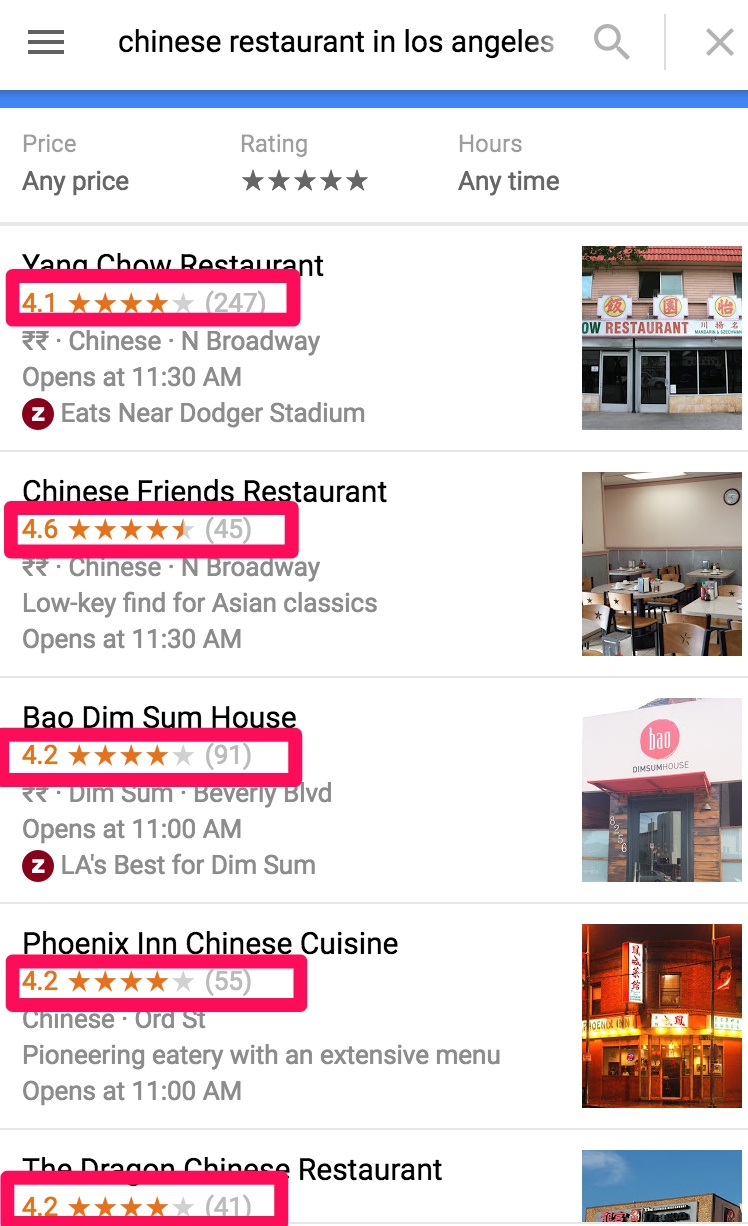
It looks like I can only enter into the top 5 results with at least 40 reviews for my business listing. And, I’ll also need to maintain a rating above 4.
While You’re At It…Optimize All Your Other Review and Social Pages Too
Other review sites, like Yelp, Facebook, Yellow Pages, and TripAdvisor, still matter. You can use the review snippet to pull in reviews from around the web to show up on your SERP listing, and for some businesses, Google links to reviews on other sites. Here’s an example from a hotel listing:
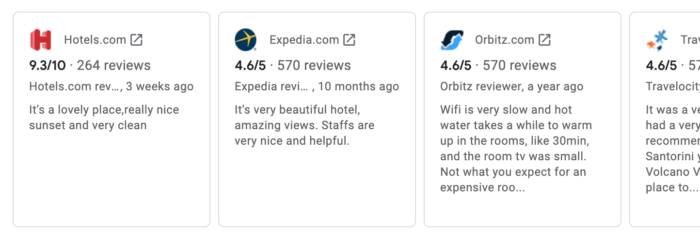
This is why you don’t necessarily have to focus exclusively on your Google My Business page when asking for reviews. Users are loyal to their favorite social media and review sites. So make it easier to leave a review by offering a Google Maps review link, but welcome reviews at other sites as well.
Paid marketing avenues: Local search ads and Google Maps Ads
Google has previously experimented with ads inside maps and pushed AdWords location extensions.
But, at the Performance Summit, Google released new forms of local search ads. The newly launched Google Maps Ads can drive real-time traffic to your physical store with turn-by-turn navigation. The mapping app allows both online and offline map capabilities with easy to zoom map view options.
They will appear with a purple ad label, above the organic search results list. They will also show your business as a purple icon on the map. Here’s an example maps result for a search on vegan restaurants in New York.
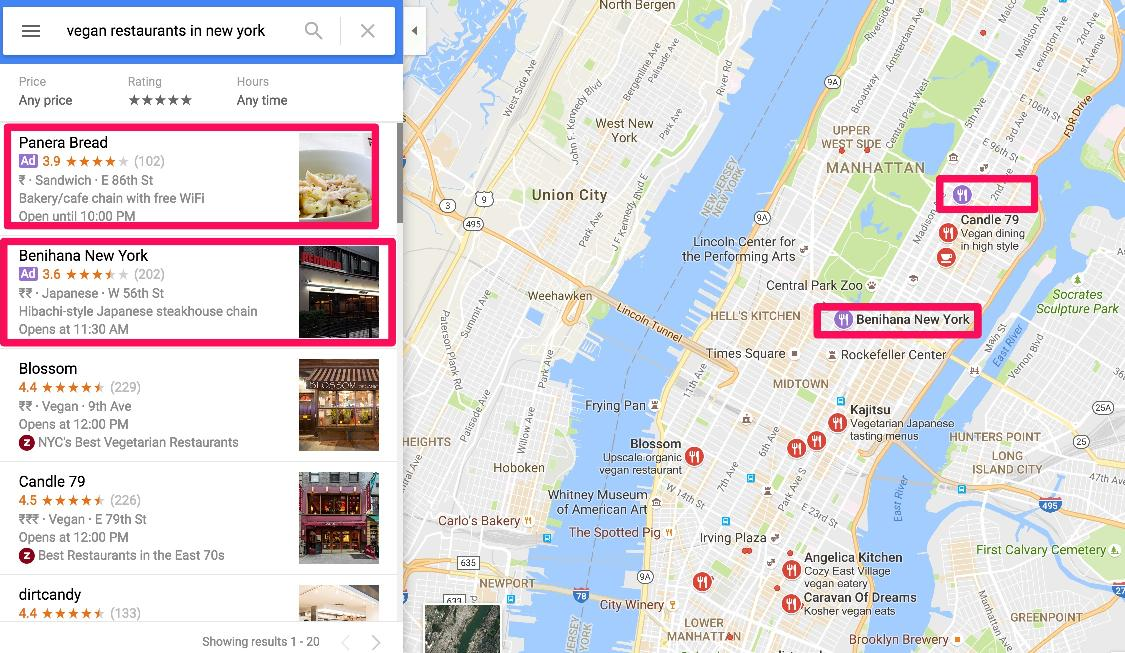
And, where will the ads be displayed?
They will be seen in the Google Maps app, as well as the mobile, desktop and tablet sites. They’ll also appear on the location-related searches in the main searches of Google.com – but only for those users that click on the “More places” link, at the bottom of the Local-3 pack.
Note that while Benihana New York and Panera Bread have bought precious real estate and prominent visibility, their ratings aren’t impressive even in the local guide. I am not sure that I’d click on their listing, over the three organic results that have at least a rating of 4.4.
Paid advertisements alone can’t substitute for your organic marketing efforts – they can only amplify them.
You should also know that Google has currently decided to show only two ads above the organic search results. These results will be based on the past user behavior and other signals that ensure that the ad spots are filled with relevant, local guide, listings.
Next, Google plans to introduce promoted pins on Maps with a special API key. Marketers will need to use location extensions to appear in these pins. And, you can attract people into your storefront who are passing by your location.
Here’s how:
Google plans to revamp the local guide pages, expanding their features and even letting businesses add new types of content.
If you’re a retailer, you’ll be able to customize your page to show your available inventory – you’ll need to send your inventory feed to Google. Here are the local inventory feed specifications from Google.
This will be incredibly helpful for retailers because one in four people avoid store visits when they are unsure whether a specific product is in stock or not.
Showing local inventory actually helped Sears Hometown and Outlet Stores increase their store visits by 122%. You don’t need an Android app to do this, just a highly responsive, well designed, mobile-friendly website. Mobile-friendly means it loads fast and is easy to read on all platforms: an Android device, iPhone or iPad.
Another great feature that you get with the ad is in-store promotion. It’s a space to extend discounts and promotions, entice prospects nearby and encourage visits to your store.
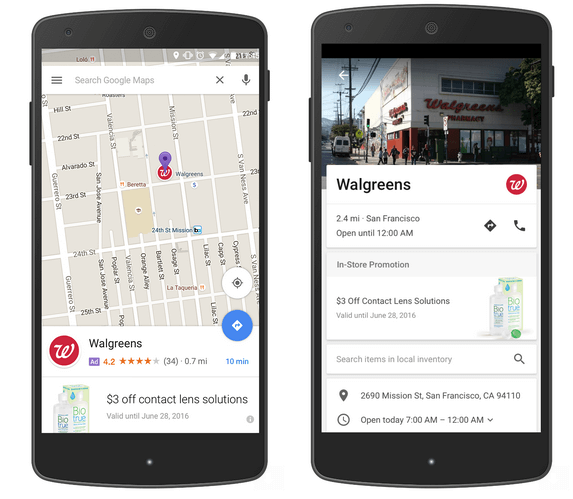
In the future, even small businesses can expect to even see store visits data. It would be made possible with a hardware solution (like beacons). Large brands and retailers already have access to such online-to-offline metrics. As per a case study of Nissan, UK – “6% of mobile ad clicks resulted in a store visit.” The ROI was estimated to be around 25x.
What are the performance metrics for judging the success of your ads?
For your organic marketing efforts:
In your Google My Business dashboard, you’re provided with a range of metrics gathered from your unique API key, to see how your business is doing.
You get the number of clicks on your phone number.
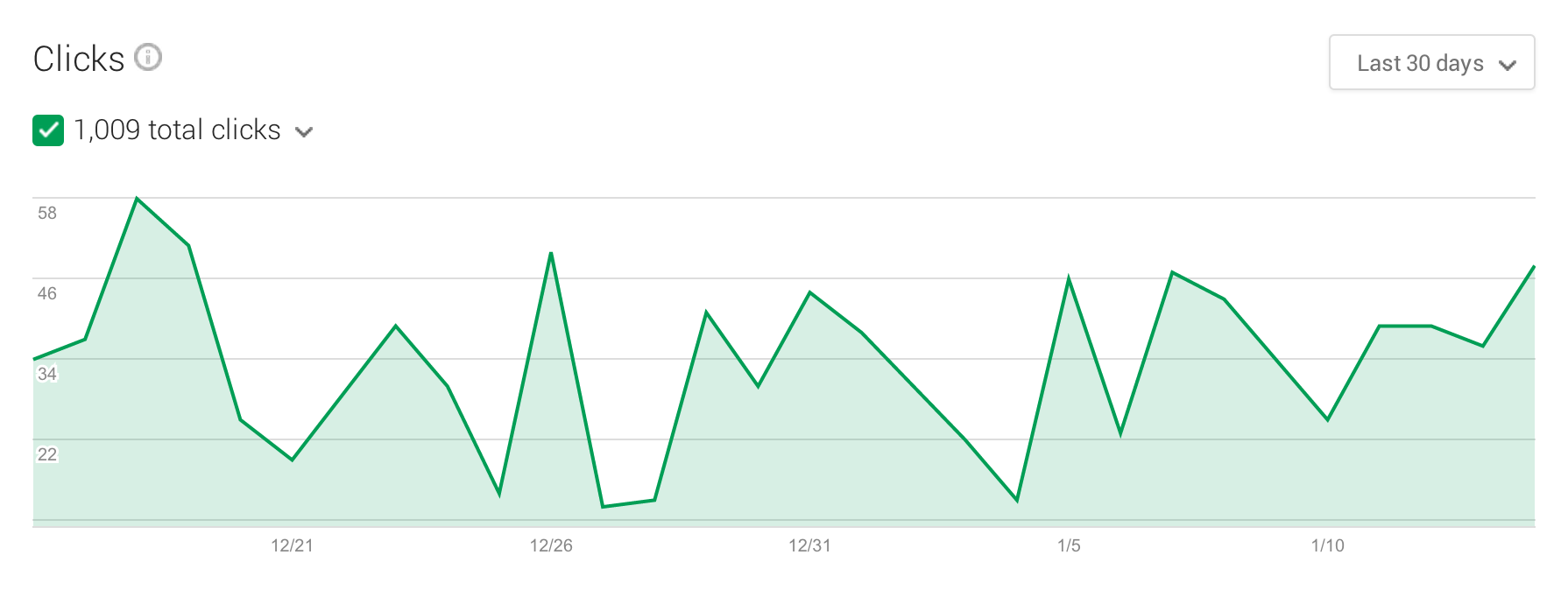
You also receive a breakdown of the phone calls that have occurred on various days.
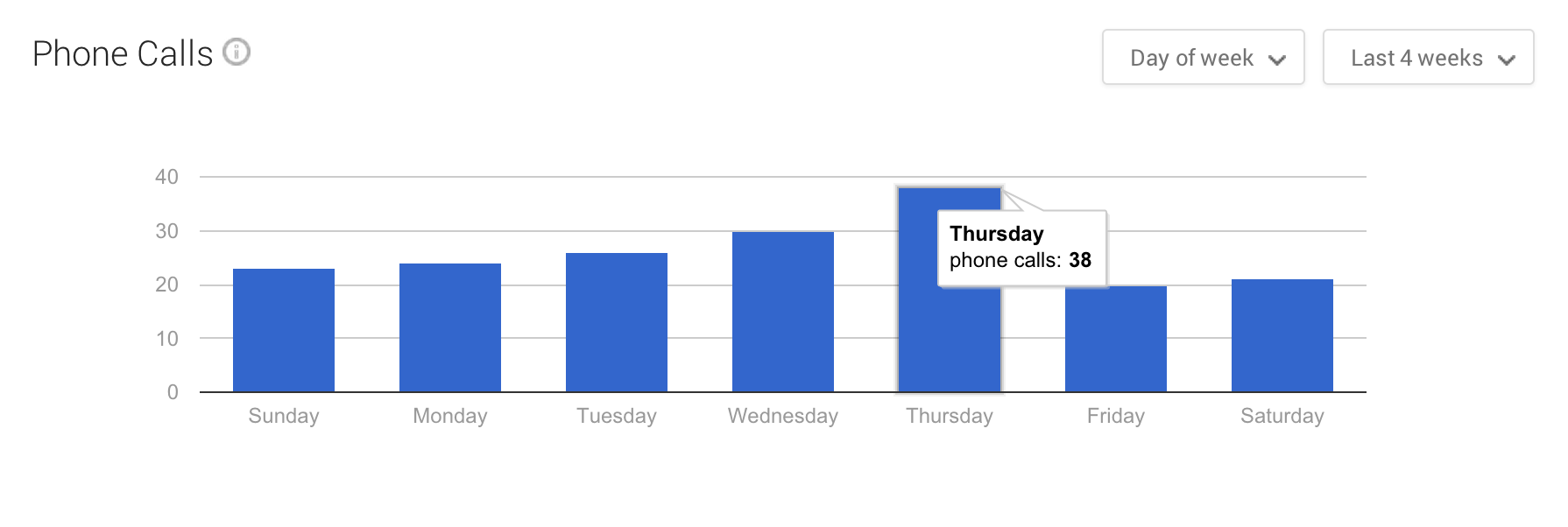
You’re shown the number of clicks by people who are looking for turn-by-turn navigation to your business.
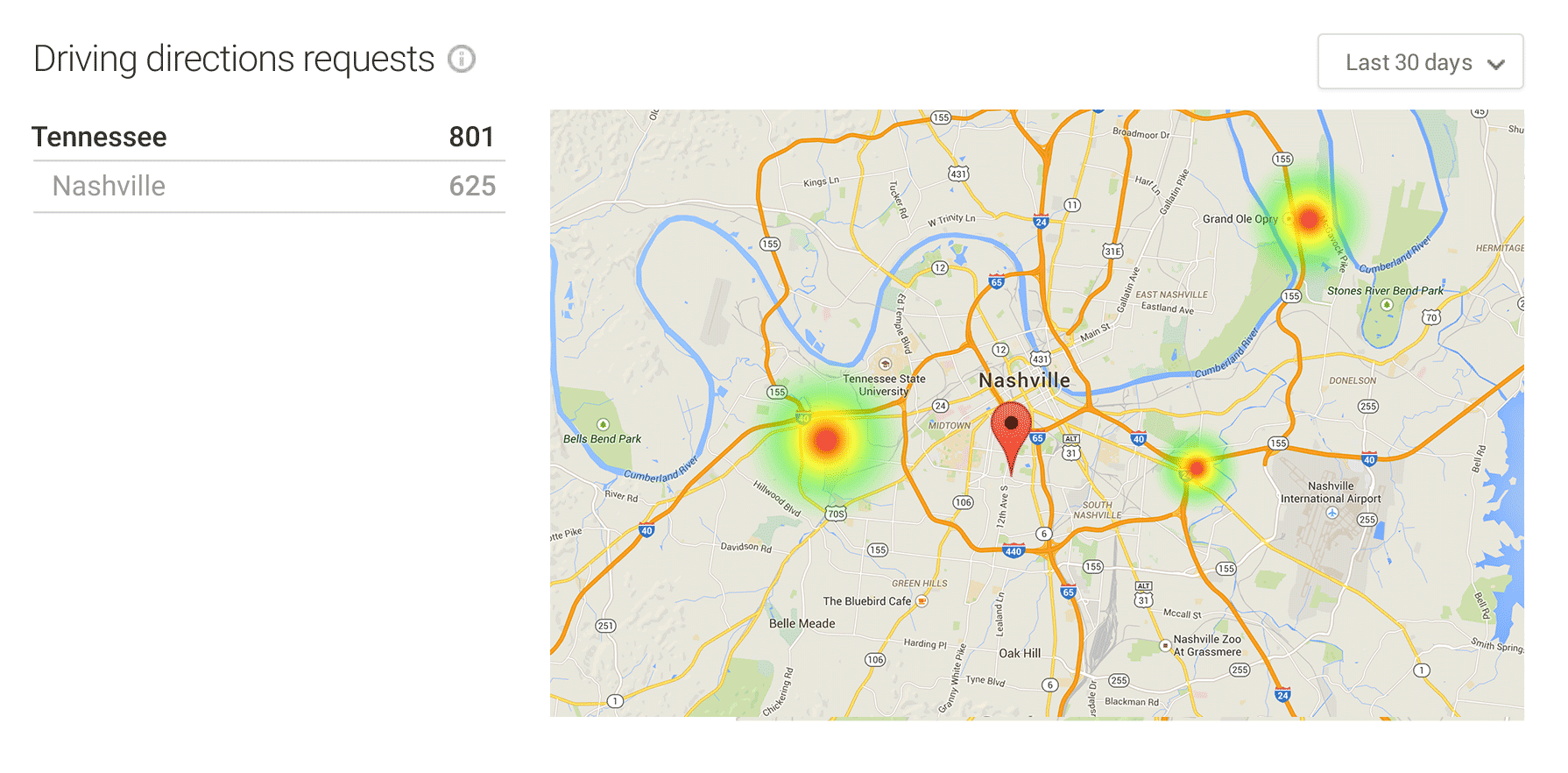
Similarly, search ads can generate 3 types of clicks and are a good way to measure the success of your campaigns.
- Get location details – A good indicator of interest in your business,
- Get direction – Can indicate how well your ads are driving traffic to your store,
- Mobile clicks-to-call – These are precious leads and it’s up to your customer representatives to convert them.
The new Google map ads are still being rolled out to local businesses. You can expect to get access to them soon. A great feature is the offline map to help your consumers save battery juice while getting into the vicinity where they would then move to turn-by-turn navigation app features in real-time.
Conclusion
Google Maps is arguably the most useful app by Google. I would recommend that you start your marketing on Maps by optimizing your Google My Business listing and encouraging customers to review you to raise local guide results. The Google Maps Ads should be rolled out to your AdWords account soon.
One more creative way for travel businesses to use Google maps is give out travel itineraries to their audiences, through custom maps. Even other local businesses can publish local guides with custom maps and attract more prospects, because good old content marketing always works.
How have you been using Google Maps in your local business marketing efforts? Let me know in the comments.
The post The Marketer’s Guide to Gain Brand Mileage on Google Maps appeared first on Neil Patel.
About us and this blog
We are a digital marketing company with a focus on helping our customers achieve great results across several key areas.
Request a free quote
We offer professional SEO services that help websites increase their organic search score drastically in order to compete for the highest rankings even when it comes to highly competitive keywords.
Subscribe to our newsletter!
More from our blog
See all postsRecent Posts
- Web Hosting September 26, 2023
- Affiliate Management September 26, 2023
- Online Presence Analysis September 26, 2023

